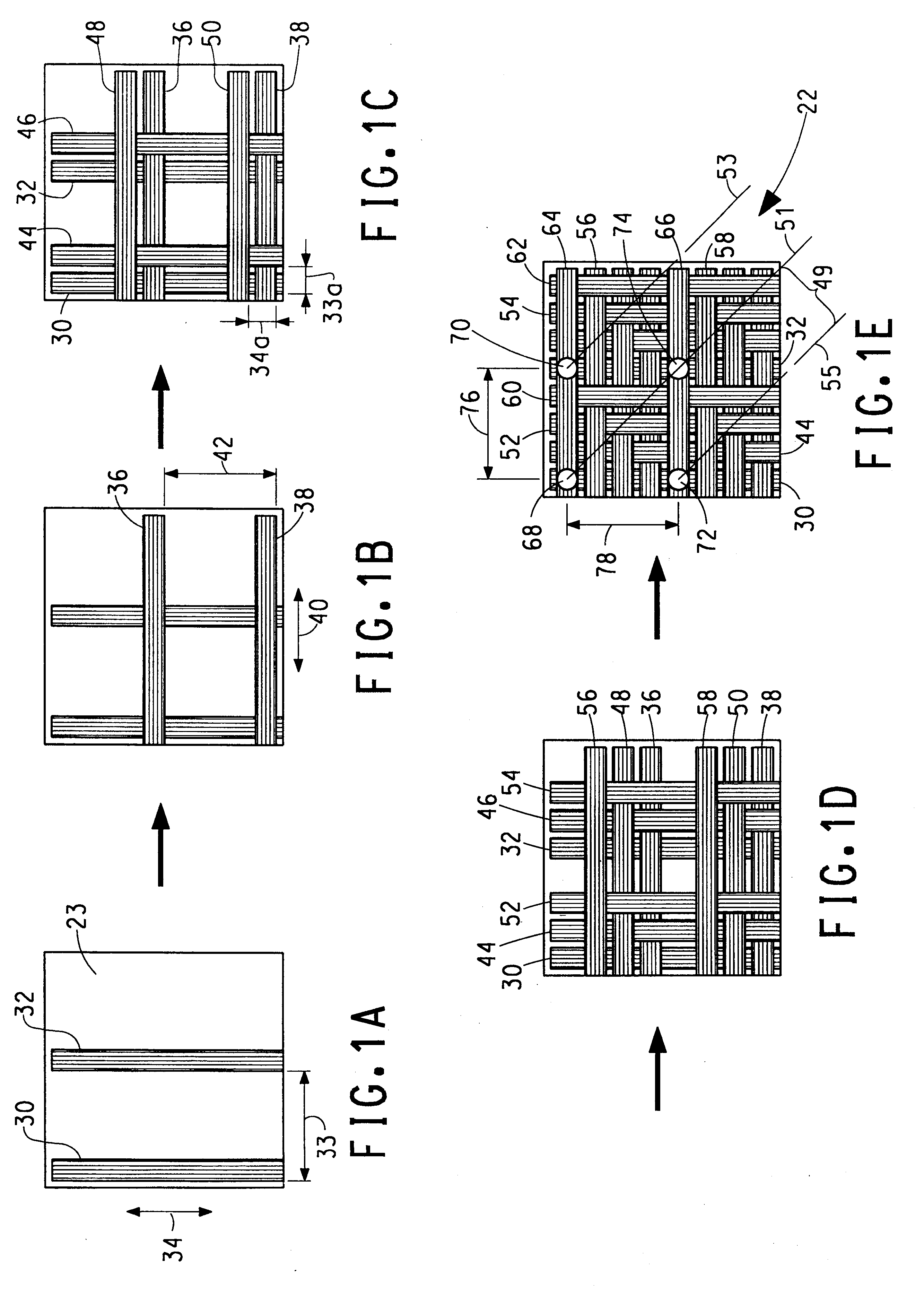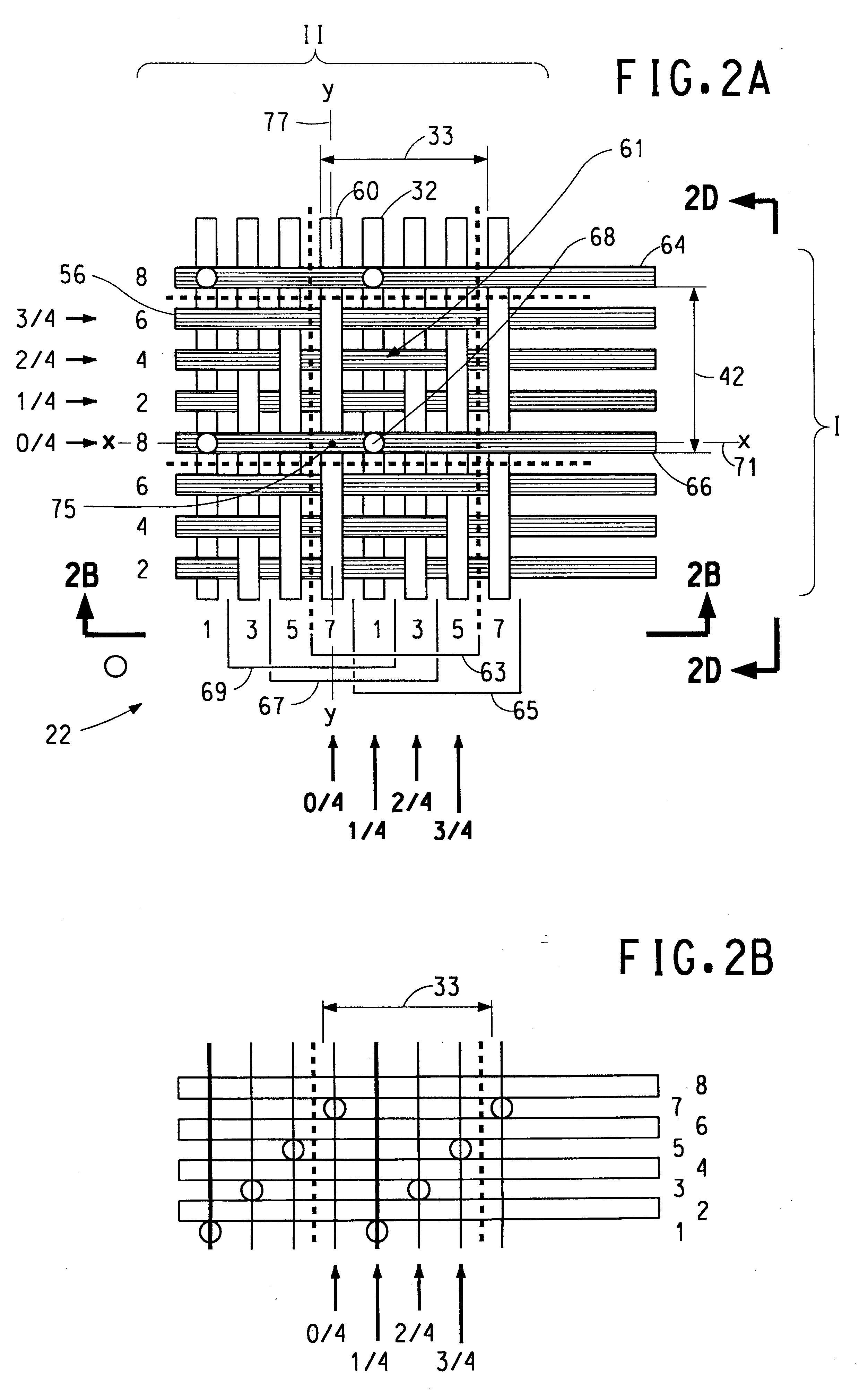Rapid fabric forming for penetration resistant fabric
a technology of penetration resistance fabric and rapid forming, which is applied in the field of textile fabrics, can solve the problems of limiting the number of yarns that can be placed in a given area, affecting the structural damage of individual yarns, and affecting the stability of the fabri
- Summary
- Abstract
- Description
- Claims
- Application Information
AI Technical Summary
Problems solved by technology
Method used
Image
Examples
example 2
A flexible penetration resistance stabilized composite yarn structure was made to resist penetration. As proof of performance, it was tested in a ballistics application. It was made by incorporating polymeric webs of thermoplastic resin in the yarn structure during fabrication to thereby have the resin act as a distributed binder to hold the yarn fibers together. The webs were in the form of a film. By varying the film thickness and / or the number of sheets, the amount of resin in the structure can be varied. In this example, the resin was 16% of the structure by weight. A sample was made using 850 denier aramid yarn sold under the trademark Kevlar.RTM. KM2 by E. I. du Pont de Nemours and Company of Wilmington, Del. 19880. It is a continuous multifilament yarn comprising 560 filaments with 1.52 denier / filament, and has a breaking tenacity of 26.4 grams / denier, a modulus of 570 grams / denier, an energy to break of 43.9 joules / gram, and an elongation to break of 3.9%.
The structure was m...
example 3
A flexible fabric structure was made similar to Example 2, samples 1-1 to 1-7 except the binder material was a polyethylene film 0.5 mils thick and the resin component of the structure was reduced from 16% to 10% by weight. This structure was designated B6B6B. The fabric was stabilized as in Example 2, so it can be handled without damage to the fabric structure. Unlike Example 2, this stabilized fabric was not further consolidated.
A ballistics composite for testing is constructed by taking the large sheet and cutting out 12 inch square pieces of stabilized fabric and stacking 14 pieces together and attaching them at the edges by sewing or application of tape folded over as in Example 2. The test samples are flexible, but are somewhat stiff (have a low drape). The results of testing the 14 layer ballistic test sample as in Example 2 is summarized below.
This composite article with less resin and more aramid yarn than the Example 2 test samples performed acceptably.
example 4
A flexible composite structure was made similar to Example 3 except the central sheet of film was omitted and the yarn was laid up in 12 subgroups of each group without interruption. The resultant composite layer had a resin content of 6% by weight of the composite structure.
A ballistics composite for testing is constructed by taking the large sheet and cutting out 12 inch square pieces of stabilized fabric and stacking 15 pieces together and attaching them at the edges by sewing or application of tape folded over as in Example 2. The test samples are flexible, but are somewhat stiff (have a low drape). The results of testing the 15 layer ballistic test sample as in Example 2 is summarized below.
This composite article with less resin and more aramid yarn than Examples 2 or 3 performed acceptably, even though the extra step of adding resin in the middle of the structure was omitted. The lower amount of resin was still sufficient to keep the yarns in place in the structure.
PUM
| Property | Measurement | Unit |
|---|---|---|
| angle | aaaaa | aaaaa |
| angle | aaaaa | aaaaa |
| angle | aaaaa | aaaaa |
Abstract
Description
Claims
Application Information
 Login to View More
Login to View More - R&D
- Intellectual Property
- Life Sciences
- Materials
- Tech Scout
- Unparalleled Data Quality
- Higher Quality Content
- 60% Fewer Hallucinations
Browse by: Latest US Patents, China's latest patents, Technical Efficacy Thesaurus, Application Domain, Technology Topic, Popular Technical Reports.
© 2025 PatSnap. All rights reserved.Legal|Privacy policy|Modern Slavery Act Transparency Statement|Sitemap|About US| Contact US: help@patsnap.com



